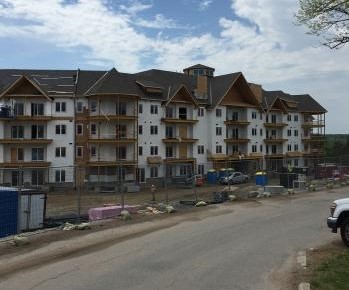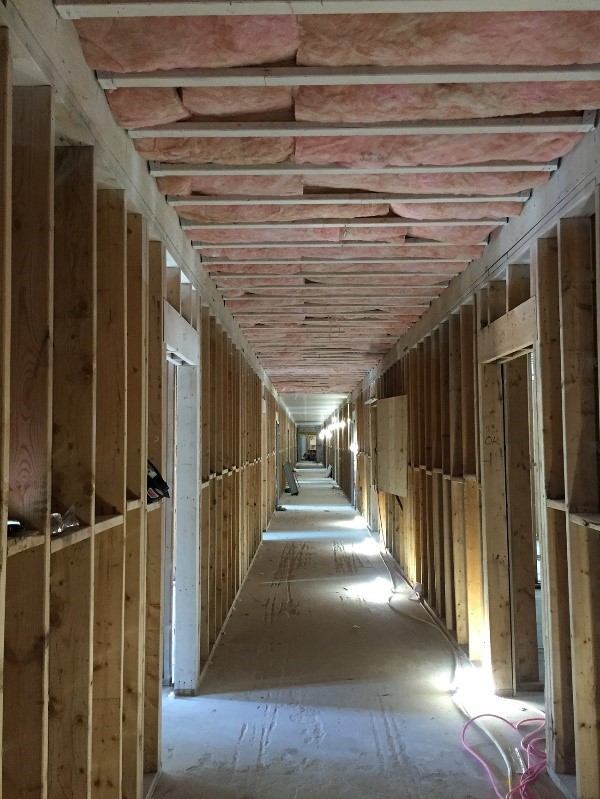Case Study: Saving a Building Project from Mould
 Technique Used: Dry Ice Blasting
Technique Used: Dry Ice Blasting
Location: Northern Ontario
Service: Mould Remediation
As the old saying goes, Canada has two seasons: six months of winter and six months of construction. Meant as a tongue-in-cheek criticism of the noise and inconvenience that often accompanies building work, it also brings to light the limited time builders have for construction projects.
In fact, building projects in Canada can be a race against time. Builders usually try to finish the exterior of a building during the warmer months so they can continue working in an enclosed and protected space when it goes cold. Otherwise, projects can be stalled for long periods or risk being damaged by the elements.
The Situation
For builders in Northern Ontario, winter came all too quickly while they were constructing a luxury, low-rise condo building. The exterior walls and some of the interior structures had been completed but due to unforeseen circumstances, the cold weather arrived before the roof was completed. As a result of the snow and wet conditions, mould developed on the building materials and spread throughout the building, affecting the interior particleboard and wood surfaces.
Mould is a serious problem that spreads quickly and needs to be removed with care. Upon discovering the mould, construction managers halted the condo build and hired Wickens Dry Ice Blasting to remove the mould throughout the building. Wickens quickly mobilized a team of trained technicians and specialized equipment and travelled to the site to begin work.
 The Solution
The Solution
The team used a three-part process to tackle the mould, moving systematically through the building.
Containment
The first step in the process was to divide the building up into work spaces on a time sensitive basis. Each of the spaces – consisting of entire floors and parts of floors was then individually contained and the containments put under negative air pressure to ensure that no mould spores would escape to the rest of the building. These spaces were then heated and dried to eliminate the conditions that gave rise to mould in the first place.
The containments were strategically designed so that construction in non- contaminated areas as well as remediated areas could proceed with as little interruption as possible.
Remediation
The second step was to carry out the remediation process. This was accomplished with a combination of dry ice blasting, biocidal treatments, detail cleaning and repeated HEPA vacuuming. The dry ice in this case reduced the remediation time from weeks per floor to days and was sufficiently thorough that all post remediation testing was negative.
Testing
Throughout the process, an independent environmental consultant conducted air and surface tests in each area of the building, confirming the remediation progress and certifying the building as being mould-free.
Wickens worked closely with consultant at every stage to expediate testing and to carry out the final remedial step on applying an encapsulant to all the remediated surfaces before removing the containment once the testing results were received.
The Result
Independent testing confirmed the project was a success.
The schedule set out by the builders for minimal impact to cost and completion was met on every level. This extensive mould remediation project was completed in only eight weeks and builders were then able to finish their work on the beautiful luxury residence.
If you have mould, Wickens can help! Contact Wickens Dry Ice Blasting for a no-obligation quote or to find out more about our services.
- 5 Expert Tips for Dry Ice Blasting Equipment Rental and Purchase - December 17, 2025
- What You Need to Know Before Starting an Asbestos Abatement Project - September 25, 2025
- Buying vs. Renting: How to Choose the Right Option for Dry Ice Blasting Equipment - June 16, 2025

 The Solution
The Solution